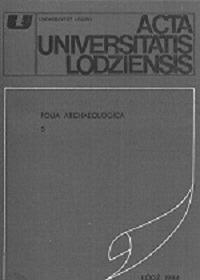More Information about Knight's-Nobleman's Seat in Poland
DOI:
https://doi.org/10.18778/0208-6034.05.06Abstract
Problems of formal and ideological ties between towers, the so-called, conical strongholds and tower manors are quite often discussed recently (L. Kajzer, T. Jakimowicz). A statement that conical strongholds are knightly residences situated in the centre of knight's estate as formulated by J. Kamińska and advocated for many years now does not seem to be the only accurate statement. Examples of settlements at Dmosin (Rawa district), Goszczewice (Radom district), and Burzenin (Sieradz district) allow the authors to show the knightly estates in which a private town or market hamlet with a parish church as a knight's endowment represent an administrative centre. This observation makes one of prerequisites, which allowed to state that the so-called conical strongholds were erected in places of strategic importance. They were not erected on a knight's initiative but rather represented a strategic concept of the ruler.
For these reasons the relationship between the tower in a conical stronghold and a tower manor should be perceived only in categories of symboliс representation. Past development of tower manors dates back to the beginnings of the state monarchy in which the nobility came to hold a privileged position. Manifestation of "knightly origins" of middle-rank noblemen's families was traced on the example of a manor-house at Zukow (Radon district). To the search for attributes of "knightly origins" – being a basic element in the propaganda concept of the nobility – the authors attribute acceptance of the tower-house “model" in Poland in 16th century.
Downloads
Downloads
Published
How to Cite
Issue
Section
License

This work is licensed under a Creative Commons Attribution-NonCommercial-NoDerivatives 4.0 International License.












